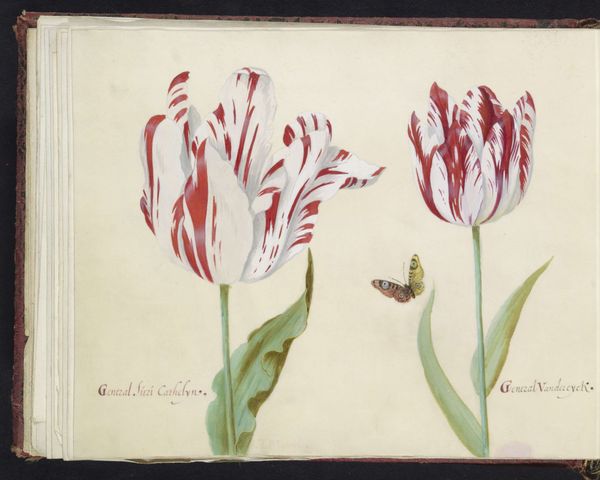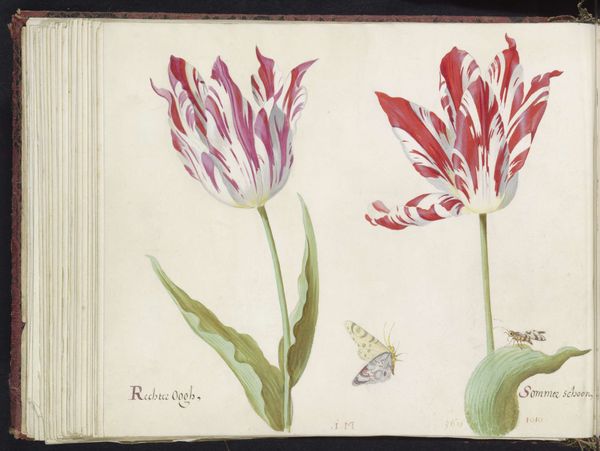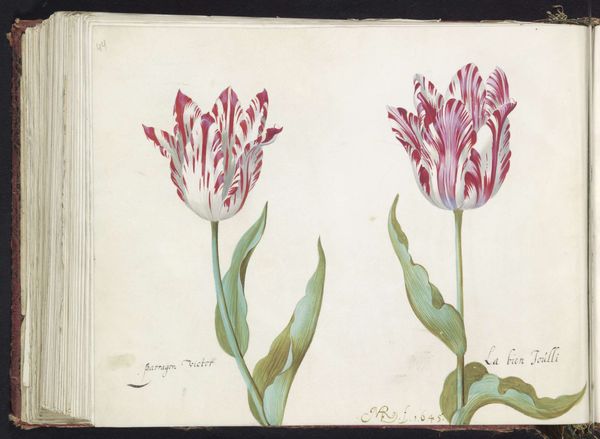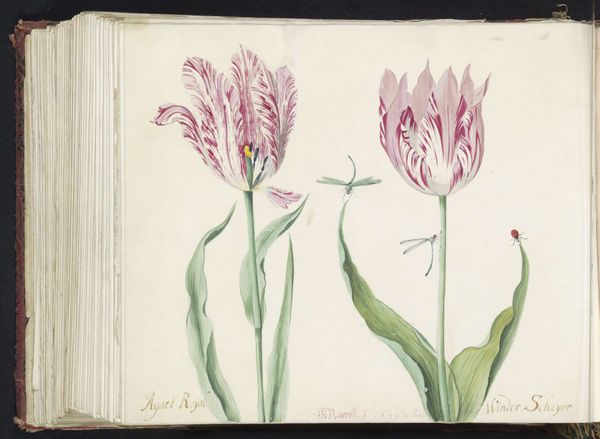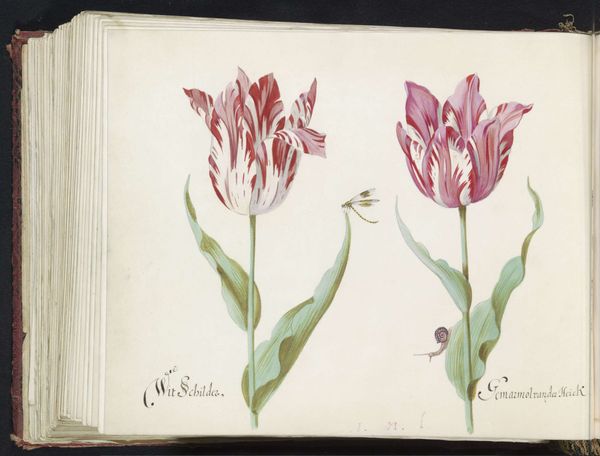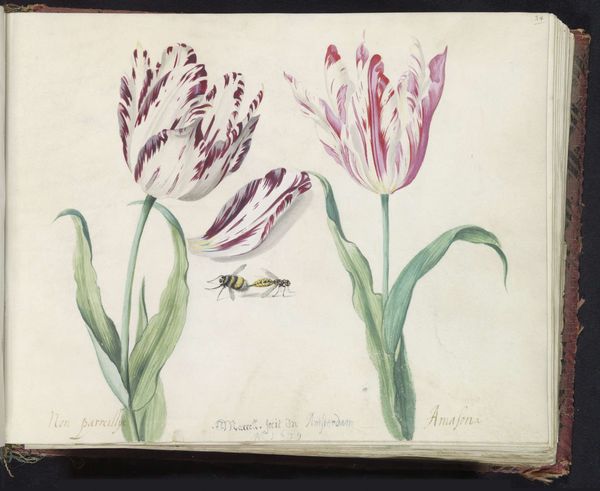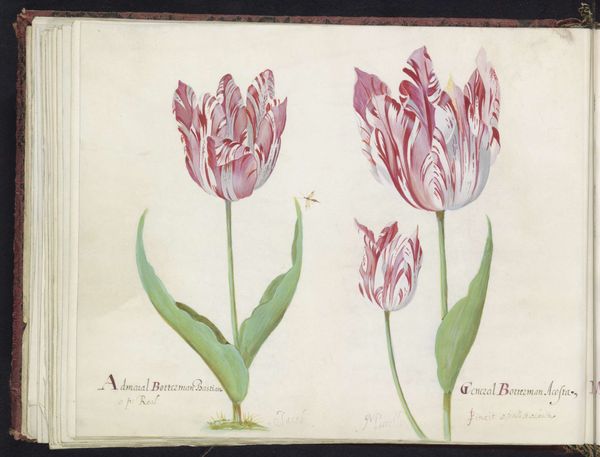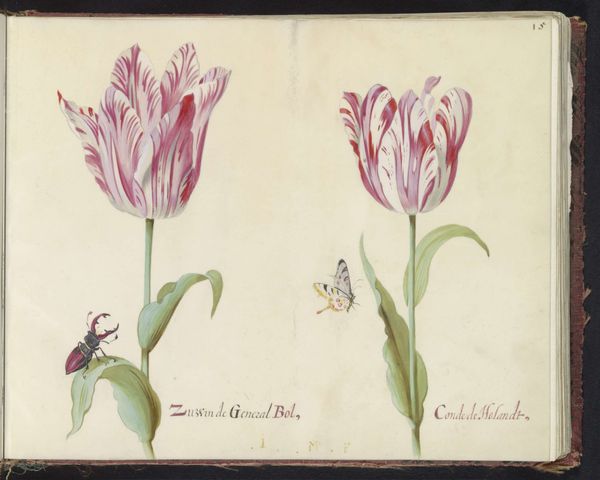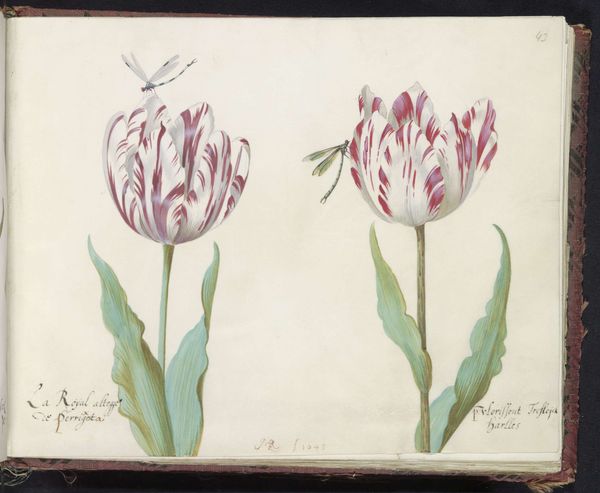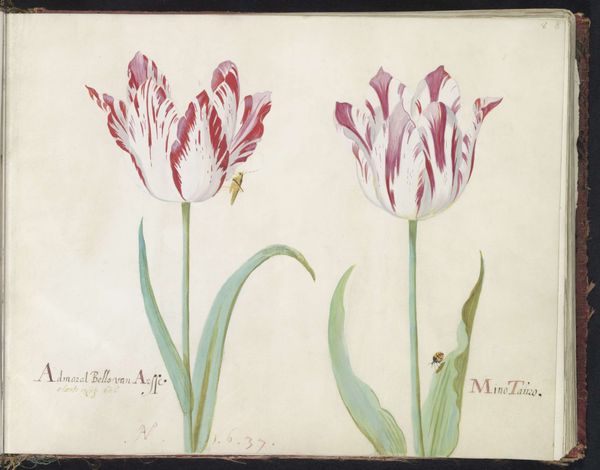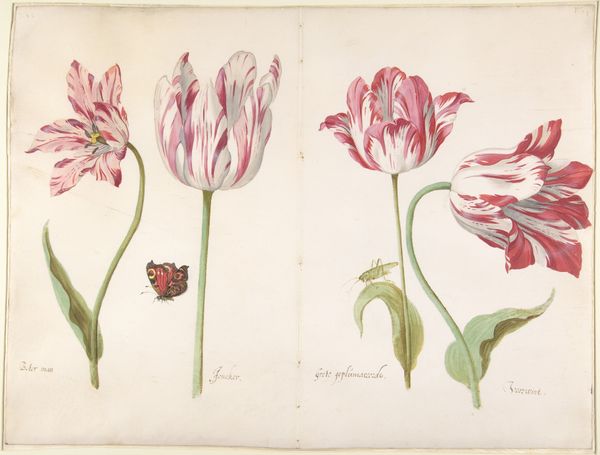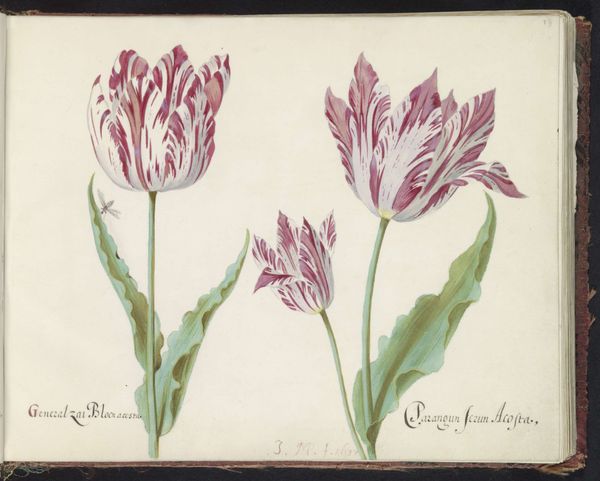
painting, watercolor
#
dutch-golden-age
#
painting
#
watercolor
#
botanical art
#
realism
Dimensions: height 265 mm, width 335 mm
Copyright: Rijks Museum: Open Domain
Curator: Jacob Marrel's watercolor from 1637, titled "Two Tulips with Primula and Snail," presents a serene study of botanical forms typical of Dutch Golden Age aesthetics. The artwork is now housed in the Rijksmuseum. Editor: My first thought? Quiet. Intimate, almost. Like stumbling upon a tiny, perfect world hidden away. It’s the stillness that gets me—that snail just casually observing. Curator: Precisely! The composition draws your eye from the dynamic, striated patterns of the tulips to the smaller, symmetrical primula nestled between. The contrasting scale and orientation introduces complexity. Editor: There’s also something poignant about capturing such fleeting beauty. Flowers, especially tulips back then, were practically currency! Makes you wonder about Marrel's state of mind painting this—maybe he’s hinting at the ephemeral nature of earthly riches. The little snail could symbolize slowing down in the face of such things, too. Curator: Intriguing thought. From a formalist standpoint, it highlights the intricate textures, from the smoothness of the petals to the glossy trail a snail leaves, creating interesting tactile elements, not often conveyed effectively in two dimensions. Notice how his delicate brushwork creates definition but the light softly blurs edges? Editor: Yes, that blending is quite powerful here. So ethereal, that I almost want to touch it. There’s a definite dialogue happening between fragility and precision, wouldn't you agree? Curator: Definitely! And ultimately this dialogue between nature and technique creates the charm we continue to find in Marrel’s meticulous rendering even centuries later. Editor: It's a lovely echo of a past infatuation and perhaps, just perhaps, a gentle reminder of life's slower, simpler pleasures, perfectly frozen.
Comments
No comments
Be the first to comment and join the conversation on the ultimate creative platform.
